Uncover the layered significance of 'loins' in biblical texts, revealing insights into strength, procreation, and spiritual readiness.

Definition of Loins in the Bible
In the grand tapestry of biblical language, the term 'loins' might just carry the weight of the world—or at least, it's portrayed with enough significance to seem that way. You've likely encountered it, nestled within passages that span from historical accounts to prophetic visions, and wondered about its deeper meanings.
Beyond its literal anatomical reference, 'loins' in the Bible is a richly layered concept, hinting at strength, procreation, and readiness for spiritual combat. As we unwrap these symbolic meanings, you'll find yourself at the edge of a deeper understanding of biblical narratives and the ancient mindset, inviting you to explore how this term shapes our perception of biblical themes and characters.
Key Takeaways
- 'Loins' in the Bible symbolize strength, readiness, and the foundation of lineage and spiritual preparation.
- Girding up one's loins is metaphorically linked to preparing for spiritual battles and life's challenges.
- Biblical references to loins emphasize the importance of spiritual vigilance and readiness for divine judgment.
- The symbolism of loins connects the physical and spiritual realms, highlighting themes of procreation, resilience, and divine promises.
Historical Context of 'Loins

In biblical times, 'loins' held significant metaphorical and literal importance, serving as a symbol of strength and progeny within the ancient cultures referenced in the scriptures. You'll find that the term 'loins' wasn't only a reference to a part of the body but also deeply intertwined with the clothing styles and cultural practices of the period. Analyzing these references provides a nuanced understanding of the everyday life and beliefs of these ancient peoples.
The clothing styles of the era were directly influenced by the necessity and symbolism attached to one's loins. Garments were often designed to be girded up, allowing for freedom of movement and readiness, which were essential qualities in a time when physical labor was a cornerstone of daily life. This action of girding up one's loins, which involved tucking the long robes into the belt to free the legs, was a physical manifestation of preparing oneself for work or battle, highlighting the cultural emphasis on readiness and strength.
Cultural practices further underscore the importance of the loins in biblical times. The act of girding up one's loins wasn't merely practical; it was imbued with symbolic weight, often representing spiritual preparedness and moral fortitude. This duality of practicality and symbolism in the treatment of the loins illustrates the deeply interwoven nature of daily life and spiritual belief in these ancient cultures.
Understanding the historical context of 'loins' within the Bible reveals much about the values, priorities, and realities of the cultures from which these scriptures emerged. It sheds light on a world where clothing styles and cultural practices weren't mere background details but were integral to expressing and living out the spiritual and physical ideals of the time.
Symbolic Meanings Unveiled
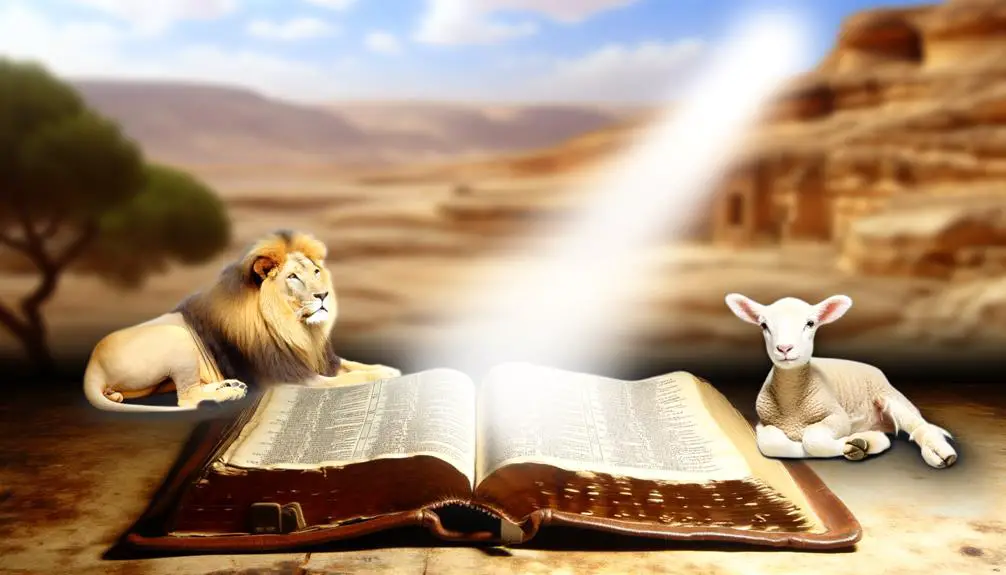
Delving deeper into the symbolic meanings of 'loins' in biblical scripture, we uncover layers of metaphorical significance that reflect the core values and spiritual insights of ancient cultures. This exploration reveals not just a literal understanding but also a rich tapestry of culinary interpretations and fashion significance that intertwine with spiritual and cultural practices.
Culinary interpretations of 'loins' in the Bible often symbolize sustenance and sacrifice. Consider the Passover lamb; its preparation and consumption are deeply ritualistic, imbued with meanings of salvation and deliverance. The 'loins' of such sacrifices, therefore, represent not merely physical nourishment but also spiritual sustenance, feeding the soul's deep hunger for redemption and connection with the divine.
On the other hand, fashion significance tied to 'loins' speaks volumes about purity, readiness, and protection. Girding one's loins, a common biblical phrase, symbolizes preparation and strength, an act of encircling one's waist with a belt to secure garments before undertaking a significant task. This action transcends the physical, illustrating a spiritual readiness to face challenges, embodying a shield of faith that guards against spiritual vulnerabilities.
These symbolic meanings, woven into the fabric of biblical text, demonstrate how 'loins' serve as a metaphorical nexus connecting the physical with the spiritual, the individual with the communal, and the mundane with the divine. You're invited to contemplate these symbols, recognizing their depth and the ancient wisdom they convey, enriching your understanding of biblical narratives and their relevance to contemporary spiritual life.
Loins: A Source of Strength
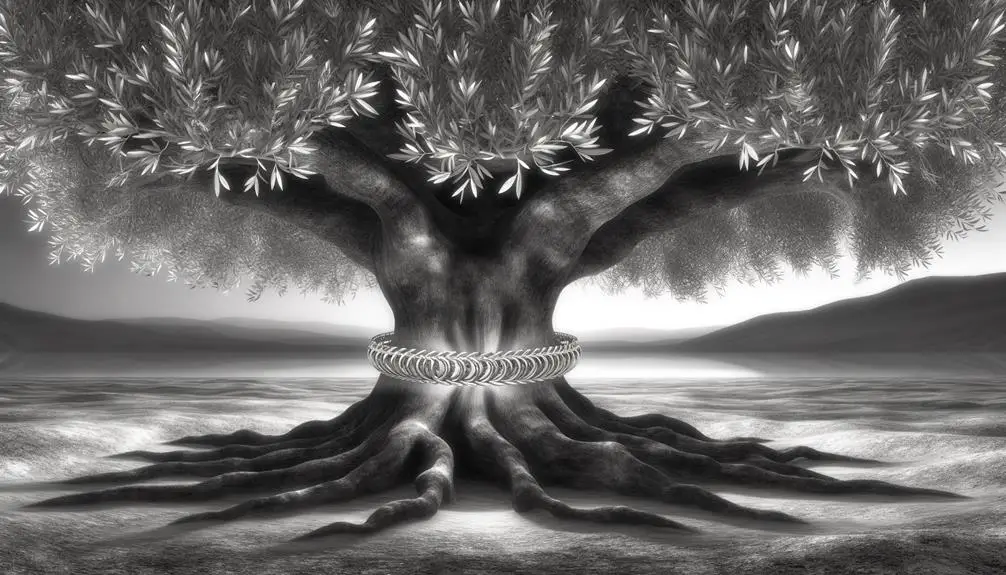
Throughout biblical scripture, 'loins' emerge as a potent symbol of strength, embodying the resilience and fortitude required to face life's myriad challenges. This term, deeply rooted in physical anatomy, transcends its literal meaning to convey spiritual and moral vigor. In the ancient world, the loins were considered the seat of physical power and vitality. When you gird your loins, as often instructed in scripture, it's not just a preparation for physical action; it's an act of bracing oneself spiritually against the trials and tribulations of life.
The metaphorical use of 'loins' in the Bible taps into this understanding, urging you to harness your inner strength. This imagery isn't merely poetic but serves as a call to action, a reminder that you possess an inherent power that, when properly harnessed, can overcome obstacles and lead to a righteous path. It's a directive to prepare, both physically and spiritually, for the tasks and battles that lie ahead.
Moreover, the mention of loins in culinary references within the Bible subtly underscores the importance of sustenance and preparation. Just as the loins of an animal are considered prime cuts, rich in nutrients and strength-giving properties, so too are your spiritual 'loins' meant to be nurtured and strengthened. This parallel draws a vivid line between the physical nourishment derived from the loins and the spiritual nourishment gleaned from steadfast faith and preparedness.
In essence, the biblical invocation to gird your loins isn't merely about physical readiness; it's an exhortation to fortify yourself, to feed your soul and spirit with the resilience needed to navigate life's challenges.
Procreation and Descendancy
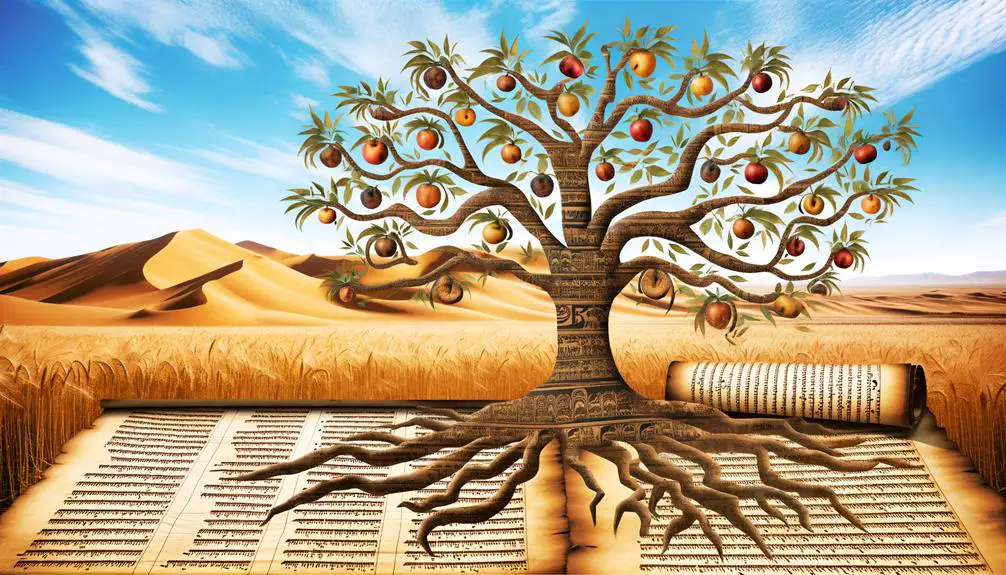
The term 'loins' also profoundly signifies the biblical theme of procreation and the lineage of descendancy, encapsulating the essential role of generating and nurturing future generations within the sacred texts. This concept isn't only central to understanding individual narratives within the Bible but also critical to grasping the overarching divine plan for humanity. In this respect, the loins symbolize a vital connection point through which genealogical significance and cultural perceptions of lineage and heritage are conveyed.
- Genealogical Significance: The lineage of key biblical figures is often traced through their 'loins', underscoring the importance of descendancy in fulfilling divine promises and prophecies. This highlights how God's plans transcend individual lifespans, weaving through generations.
- Cultural Perceptions: In ancient times, a strong lineage was a source of pride and a marker of identity. The biblical emphasis on 'loins' reflects this cultural valuation, emphasizing the honor associated with fruitful descendancy.
- Covenantal Promises: God's covenants with Abraham and David, among others, illustrate the critical role of procreation in ensuring the continuity of God's promises through their 'loins', across generations.
- Messianic Lineage: The genealogies of Jesus, as presented in the Gospels of Matthew and Luke, underscore the significance of 'loins' in tracing the Messiah's lineage, fulfilling Old Testament prophecies.
Through these lenses, the biblical term 'loins' emerges not merely as a physical reference but as a profound symbol intertwining genealogical significance and cultural perceptions, thereby anchoring the sacred narrative in the deeply human experience of procreation and legacy.
Readiness for Spiritual Battle

In biblical discourse, 'girding up your loins' symbolizes an imperative readiness for spiritual battle, emphasizing a proactive stance in faith and moral vigilance. This imagery isn't merely poetic but deeply instructive, urging you to undertake spiritual preparation with the seriousness and urgency of a soldier arming for conflict. The armor metaphor, frequently invoked in scriptures, isn't just an allegory but a call to action, signifying the array of virtues and divine truths you must embrace to stand firm against spiritual adversities.
Spiritual Armor Component |
Significance in Spiritual Battle |
|---|---|
Belt of Truth |
Anchors you in divine reality, combating deception |
Breastplate of Righteousness |
Protects your heart with purity and moral integrity |
Shoes of Peace |
Enables you to stand firm, spreading tranquility in tumult |
Shield of Faith |
Deflects the fiery darts of doubt and despair |
Helmet of Salvation |
Guards your mind against despair, focusing on eternal hope |
You're called to don this armor not as a passive defense but as an active engagement in spiritual warfare. This preparation, both defensive and offensive, equips you to confront and overcome the trials and temptations that assail your faith. It's a deliberate process, requiring daily renewal of your commitment to live in accordance with God's will, fortified by prayer and the study of Scripture.
Your readiness for spiritual battle, then, isn't a static state but a dynamic, ongoing endeavor. It's an invitation to live with purpose, vigilance, and an unyielding resolve to uphold the tenets of your faith, even in the face of unseen adversaries.
Gird Up Your Loins' Explained
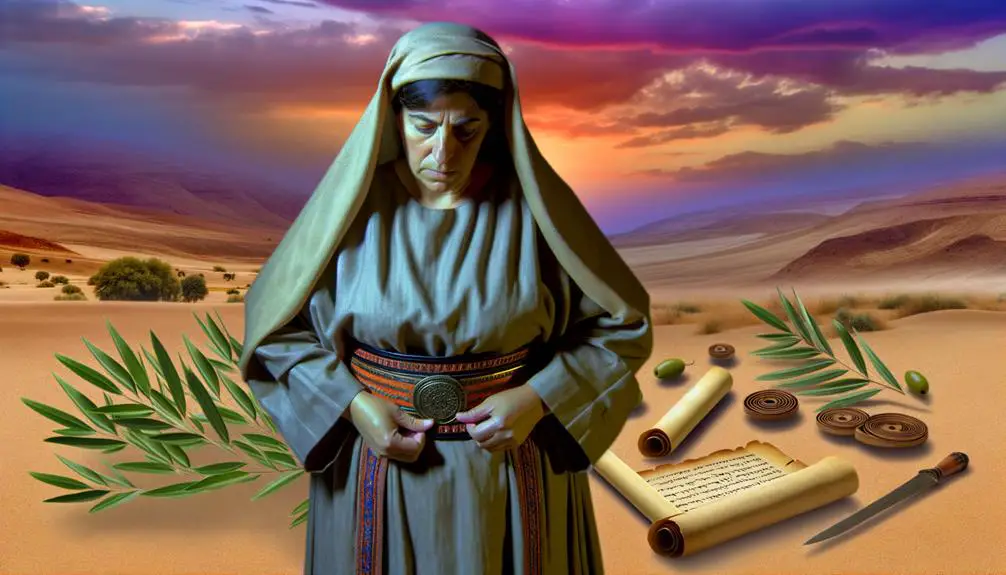
Delving into the biblical command to 'gird up your loins,' we uncover a rich tapestry of meaning that transcends mere physical preparation, inviting you into a deeper, spiritual readiness. Historically, this phrase instructed individuals to tuck their long garments into their belts to facilitate freedom of movement, symbolizing preparation and alertness. Today, the essence of this command extends far beyond its physical origins, permeating modern interpretations and influencing fashion, while still retaining its foundational call to preparedness and spiritual vigilance.
The modern interpretations of 'gird up your loins' often revolve around mental and emotional readiness for life's challenges, encouraging you to:
- Embrace resilience and determination in the face of adversity.
- Cultivate a mindset of readiness and anticipation for what lies ahead.
- Foster spiritual preparedness through prayer, meditation, and reflection.
- Recognize the influence of ancient fashion in contemporary spiritual symbolism.
This command, rich in historical context, now serves as a metaphor for empowering you to face life's battles with courage and faith. The fashion influence is seen in how modern believers symbolically 'gird up' their spiritual armor, echoing the ancient practice through the lens of contemporary faith expressions.
In this scholarly exploration, we've seen that 'gird up your loins' isn't merely an archaic directive but a timeless call to action. It beckons you to fortify your heart, mind, and spirit, preparing for the spiritual journey ahead with reverence and determination. As we analyze its relevance, the phrase remains a powerful reminder of the importance of readiness in both ancient and modern contexts.
Loins in Biblical Prophecies
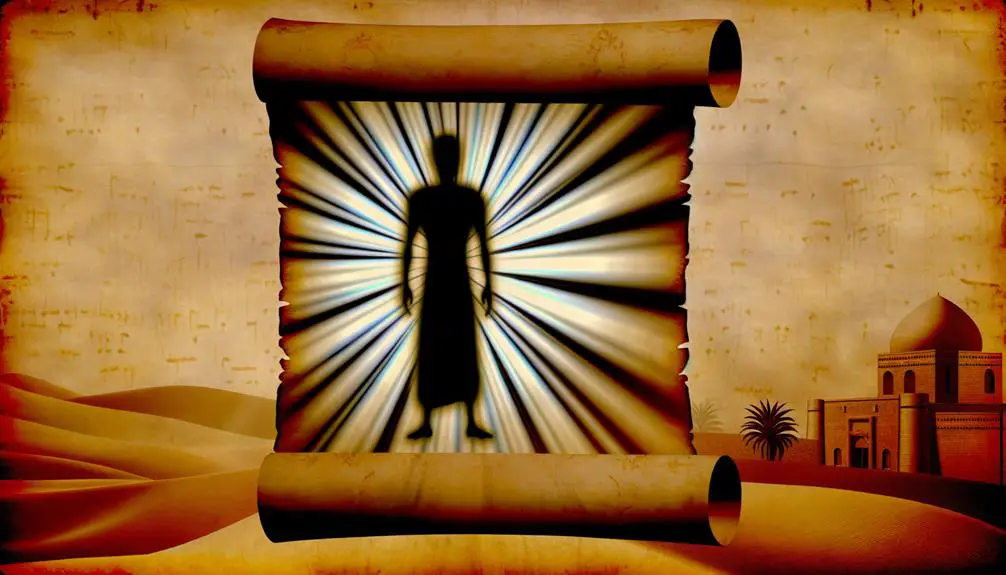
Building on our understanding of physical and spiritual preparedness through 'gird up your loins,' let's explore how loins are symbolically referenced in biblical prophecies, offering insights into divine intentions and human destiny. In the tapestry of Scripture, references to loins in the context of prophecy serve not only as metaphors for readiness but also carry deep prophetic significance, suggesting preparation for future events that shape the course of humanity and divine interaction.
Reference |
Prophetic Significance |
|---|---|
Ephesians 6:14 |
The "belt of truth" around the loins symbolizes spiritual readiness and integrity essential for facing end times. |
1 Peter 1:13 |
"Girding up the loins of your mind" emphasizes mental and spiritual preparation for the revelation of Jesus Christ. |
Revelation 1:13 |
The figure "clothed with a garment down to the foot, and girt about the paps with a golden girdle" represents Christ's readiness and authority to enact divine judgment and fulfillment of prophecies. |
These references underscore the significance of being spiritually girded, alert, and prepared for the unfolding of divine plans. The imagery of girded loins in prophecy not only echoes the call for individual readiness but also highlights the cosmic scale of future events, where divine justice, truth, and salvation are ultimately manifested. As you delve deeper into biblical prophecies, you're invited to reflect on the symbolic use of loins, recognizing it as a call to spiritual vigilance in anticipation of the fulfillment of God's promises and the establishment of His kingdom.
Frequently Asked Questions
What Specific Rituals or Customs Did Ancient Cultures Practice That Involved the Loins, Which Are Not Directly Mentioned in the Bible?
You might find that ancient cultures had unique practices involving the loins, which were deeply rooted in fertility symbols and ancestral worship, yet these aren't explicitly detailed in biblical texts.
These rituals often signified strength, virility, and the continuation of lineage, reflecting a reverence for the power of creation and the ancestors' spirits.
Scholars analyze such customs to understand the broader cultural and spiritual significance of the loins in historical contexts.
How Do Modern Translations of the Bible Handle the Term 'Loins' Differently, if at All, Compared to Older Translations?
You're diving into how modern Bible translations grapple with 'loins,' a term steeped in tradition yet elusive in contemporary speak. These versions strive for translation accuracy, carefully balancing literal meanings with cultural metaphors that resonate today.
Scholars, in their reverent analysis, weigh the original context against current linguistic norms, ensuring the term's rich, symbolic essence is preserved yet understood, bridging ancient wisdom with today's readers in a scholarly dance of fidelity and clarity.
Are There Any Health or Medical Practices Mentioned in Historical Texts or Interpretations That Relate to the Loins Area, but Are Not Specifically Discussed in Biblical Contexts?
You're diving into the vast world of historical texts, exploring how they approach the loins area through medical treatments and symbolism, independent of biblical contexts. These documents often reveal fascinating insights into ancient health practices, some of which might indirectly mirror or contrast biblical narratives.
They delve into treatments and symbolic interpretations tied to the loins, offering a rich tapestry of cultural and medical knowledge that predates or parallels scriptural discussions.
How Have Artists and Illustrators Historically Depicted the Concept of 'Girding up One's Loins' in Biblical Artwork, Outside of the Descriptions Provided in Scripture?
You'll find that artists have often used color symbolism and fabric techniques to bring the concept of 'girding up one's loins' to life, outside the direct scriptural descriptions.
They've depicted figures with vibrant hues and detailed textures to signify readiness and strength, analyzing these elements with a scholarly, reverent approach.
Each artwork becomes a study in how ancient practices are visualized, blending historical accuracy with artistic interpretation.
Are There Any Notable Differences in How the Concept of 'Loins' Is Addressed or Interpreted in Other Religious Texts Outside of the Bible, Such as the Quran or the Torah?
You'll find that loins symbolism varies across religious texts, including the Quran and the Torah. Each tradition offers unique cultural parallels, shaping the interpretation of loins differently.
While the Bible may use loins to denote strength or readiness, the Quran and Torah might emphasize purity or lineage. Analyzing these texts, you'll uncover a rich tapestry of meanings, showcasing the diverse ways spirituality and physicality intertwine in religious narratives.
Conclusion
In conclusion, exploring the biblical significance of 'loins' reveals a rich tapestry of meanings.
You've seen how it symbolizes strength, fertility, readiness for spiritual warfare, and the promise of future generations.
The phrase 'gird up your loins' epitomizes preparing oneself for action, harkening back to ancient customs with profound spiritual implications.
As you delve into these insights, you uncover the depth of biblical language, inviting a deeper reverence for its timeless wisdom and its intricate connection to human experience.



Sign up